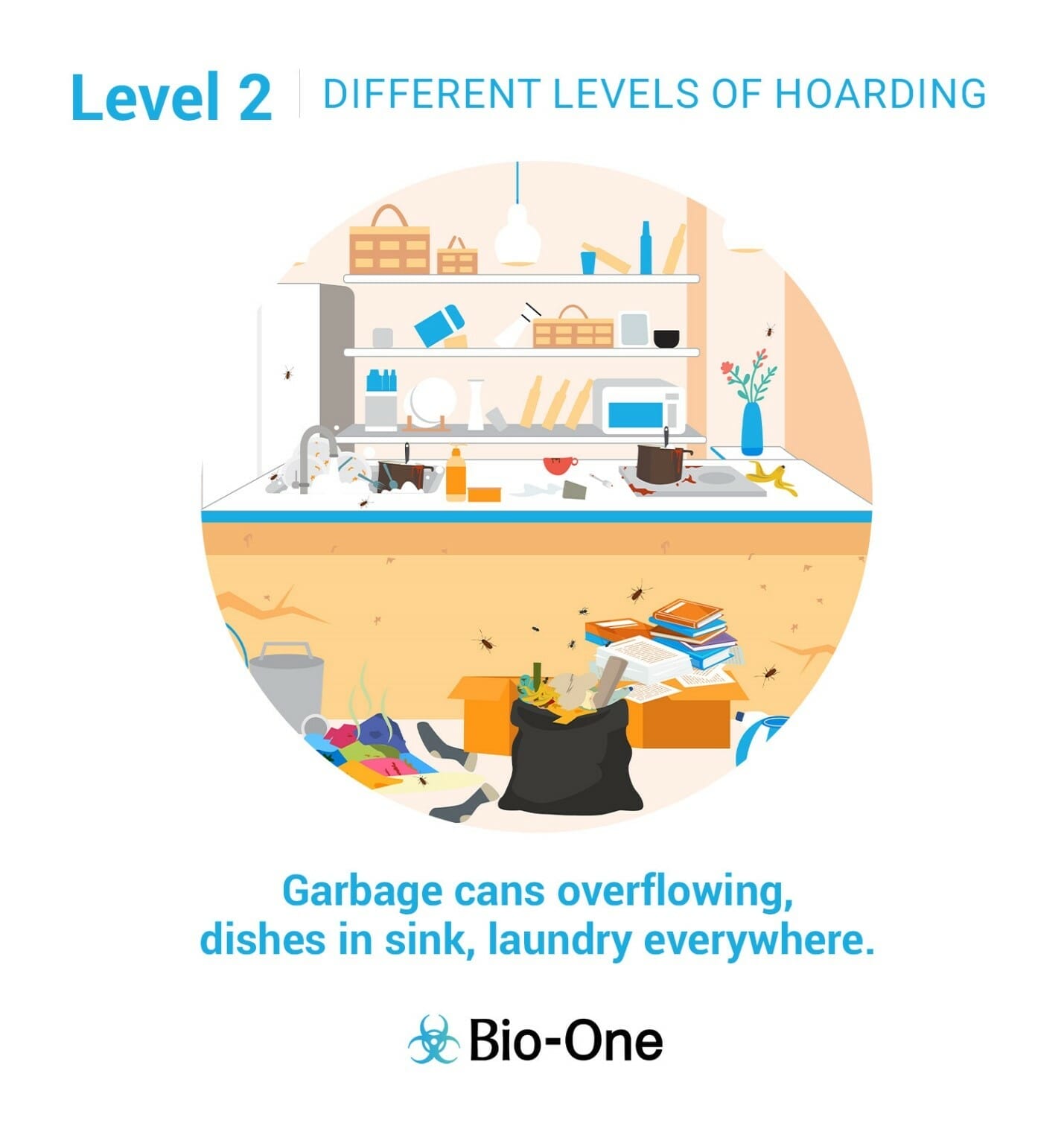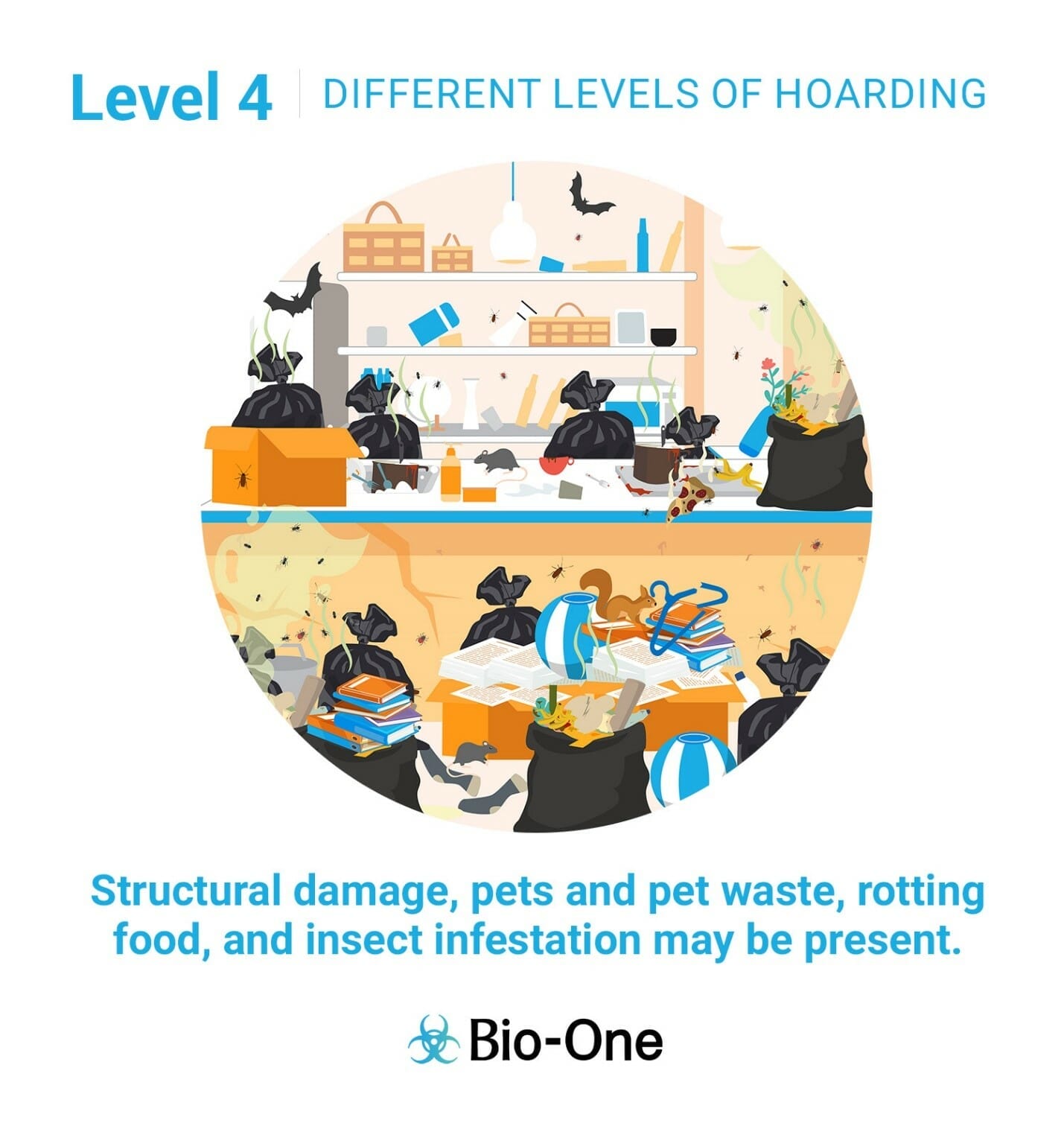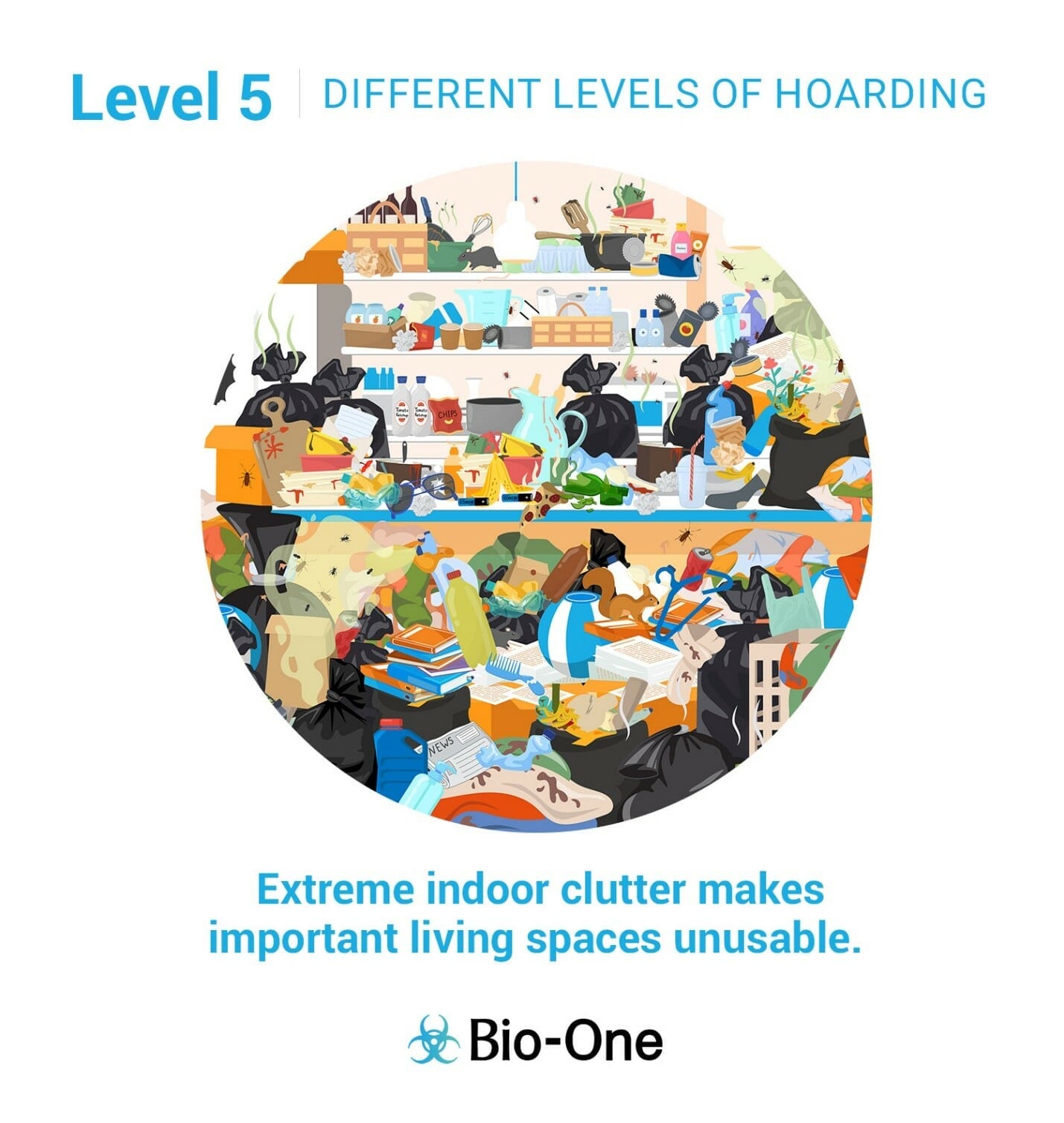
The word “hoarding” probably evokes a particular image, made more common by shows like Hoarders that highlight extreme examples. In reality, not all hoarders have rooms full of items piled high to the ceiling.
The Institute for Challenging Disorganization (now, there’s a relatable title!) has classified hoarding behavior into five levels on their Clutter-Hoarding Scale.Level 1 Hoarding

At Level 1, a home is not pristine, but the space is still easily accessible and sanitary. There is clutter, but no concern for safety. Most, if not all of us, have been in Level 1. Many people spend most of their time in this stage.
Here are the defining characteristics of this level:

At Level 2, the home is still very livable, but there’s more evidence of disarray. The home is in need of cleaning and may be starting to overwhelm the residents. The hygiene level isn’t optimal.
Most of us bounce between Level 1 and Level 2. However, here are the more defining characteristics of Level 2:

Level 3 is considered the turning point between manageable household disorganization and a more serious issue. Level 3 homes show extreme disorganization and indicate hoarding behavior.
Here are the defining characteristics of this level:
Level 3 households should consider hiring outside help. Although, it’s still possible to get it under control with a concerted effort from the whole family

At Level 4, the home shows excessive clutter.Those living in Level 4 conditions need professional help. At this level, part of getting help includes professional cleaning to transform the house into a safe, hygienic space where people can thrive. Mental health counselors and social workers may also step in to help residents change their habits.
Here are the defining characteristics of this level:

Level 5 is the highest level of hoarding behavior. Level 5 homes are alarmingly hazardous.
They require professionals with safety equipment and training to clean.
Here are the defining characteristics of this level:
If you or someone you know is struggling with these levels of hoarding we are here to help.
You can find more information at https://biooneorange.com/ or contact us at (714) 397-8375

Things are not easy for someone struggling with hoarding disorder, their loved ones, and the people around them. Both parties must understand the dangers and the importance of approaching the situation with deep care and sensitivity. On the one hand, the hoarder will struggle with understanding what hoarding means and the impact that it has had on their life. On the other, there are the victim’s families and loved ones, who also need to understand that hoarding is related to multiple mental health conditions that must be treated.
For someone who hoards, items have a different meaning, a more “emotional” value, and while it is ok to keep things that have a personal meaning for us when the accumulation and buildup of things affect your daily activities, that’s when help from professionals is required.
Everyone needs help. Bio-One of Orange's specialists can help remediate hoarding scenarios. Serving Orange County and surrounding communities, we are prepared to help you restore the property from all the biohazards that result from a buildup of possessions and clutter. Now, what are the common symptoms of someone living a hoarding lifestyle? How is their relationship with themselves and their environment? Here’s a list that can help you identify a potential hoarding scenario.
These symptoms help us better understand hoarding and the importance of approaching these situations with care, compassion, and a genuine desire to help. Bio-One of Orange's team of specialists is here for you. We understand that sometimes things get out of control, and we will prioritize restoring your property from all the potential biohazards and having you or your loved one return to a safe, clean, disinfected environment that provides a fresh, positive outlook for the hoarding disorder.
We will work with you, step-by-step, to ensure that we keep all the items of value and discard those that may be dangerous to your environment.

Bio-One of Orange offers a quick solution to life’s most difficult and unexpected situations. Locally owned, we provide top-quality, industry-leading cleaning, sanitation, and decontamination services in:
Locally owned, Bio-One of Orange is proud to serve Orange County and surrounding Southern California areas: Aliso Viejo, Anaheim, Brea, Buena Park, Costa Mesa, Cypress, Dana Point, Fountain Valley, Fullerton, Garden Grove, Huntington Beach, Irvine, La Habra, La Palma, Laguna Beach, Laguna Hills, Laguna Niguel, Laguna Woods, Lake Forest, Los Alamitos, Mission Viejo, Newport Beach, Orange, Placentia, Rancho Santa Margarita, San Clemente, San Juan Capistrano, Santa Ana, Seal Beach, Stanton, Tustin, Villa Park, Westminster, and Yorba Linda!
Our professional technicians are ready to help you restore your home or business. Bio-One of Orange, a proud member of the Orange Chamber of Commerce, is available 24/7, 365 days a year. Contact us at 714-397-8375.